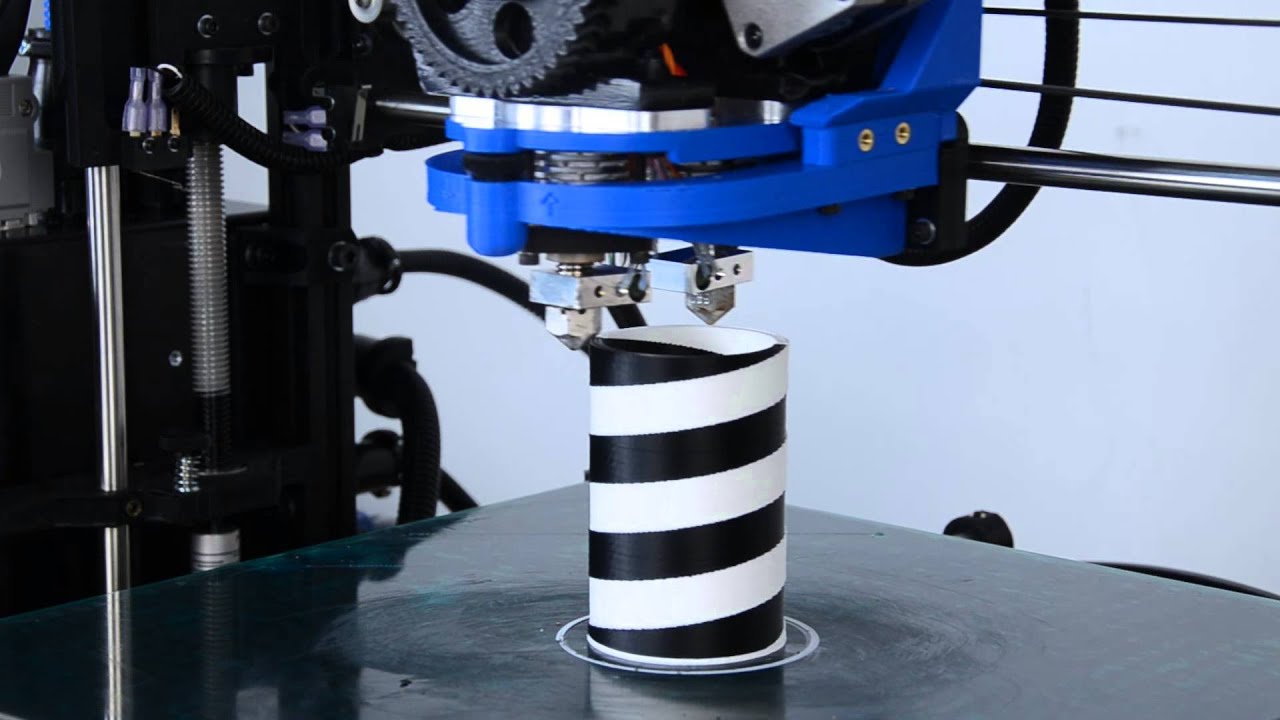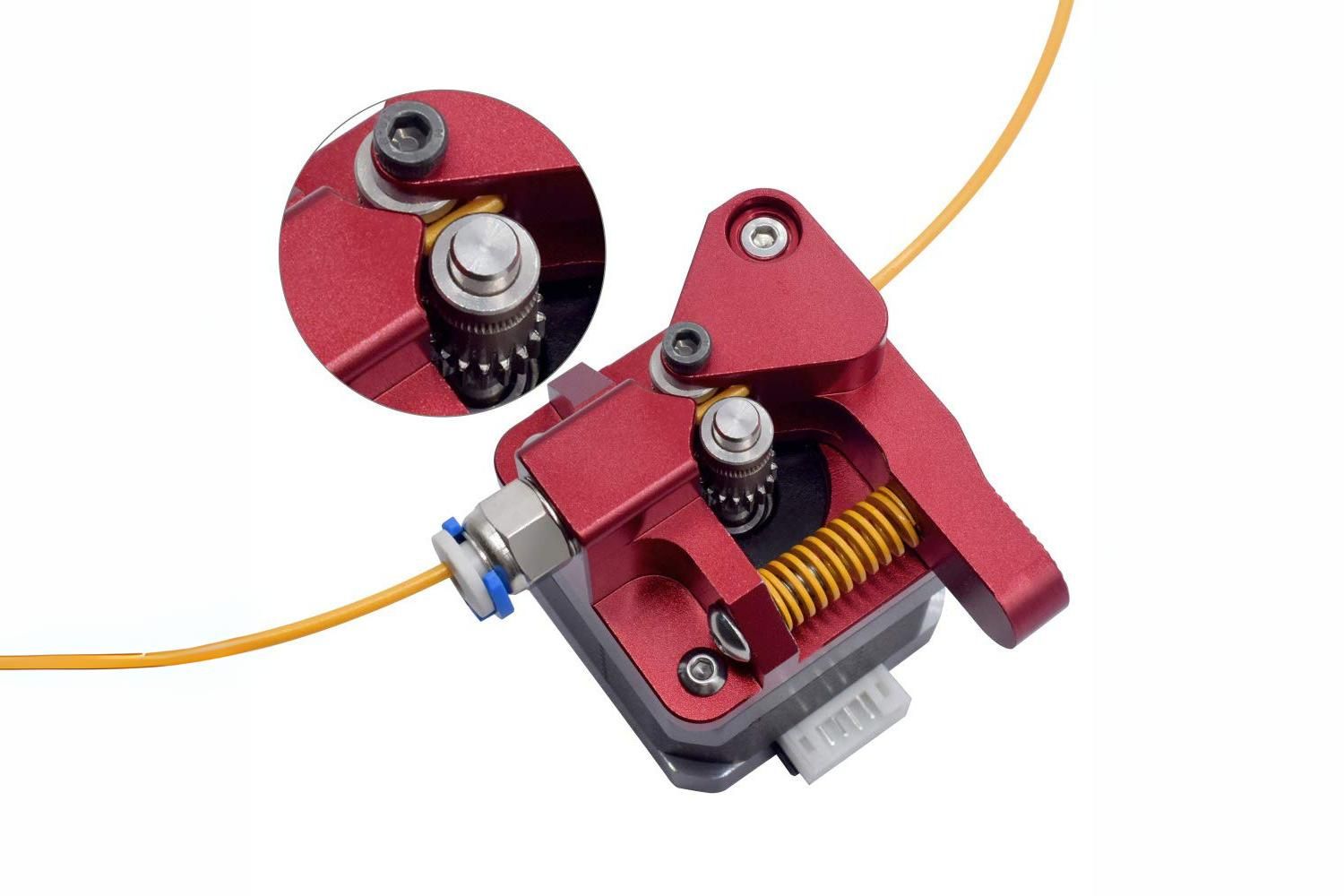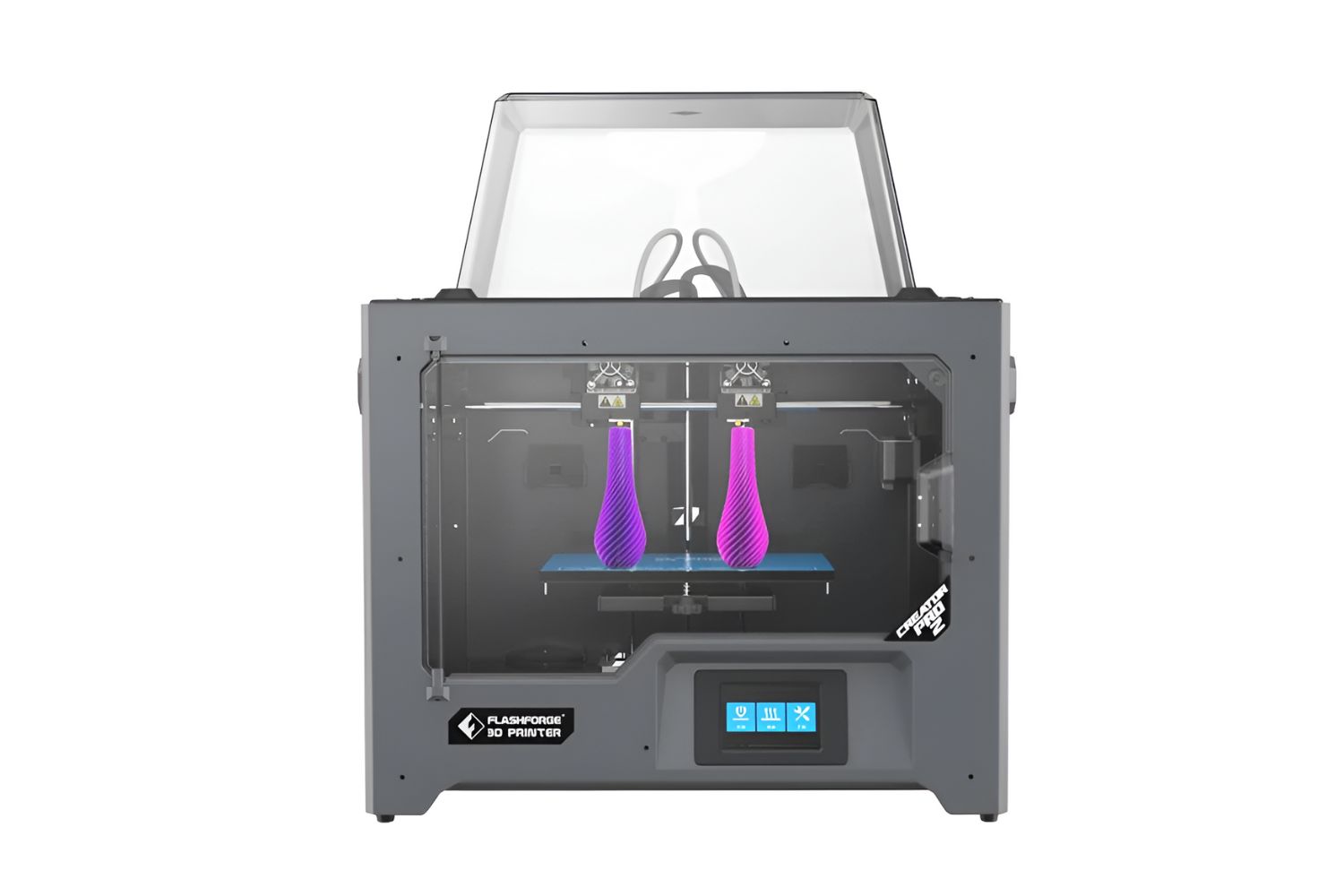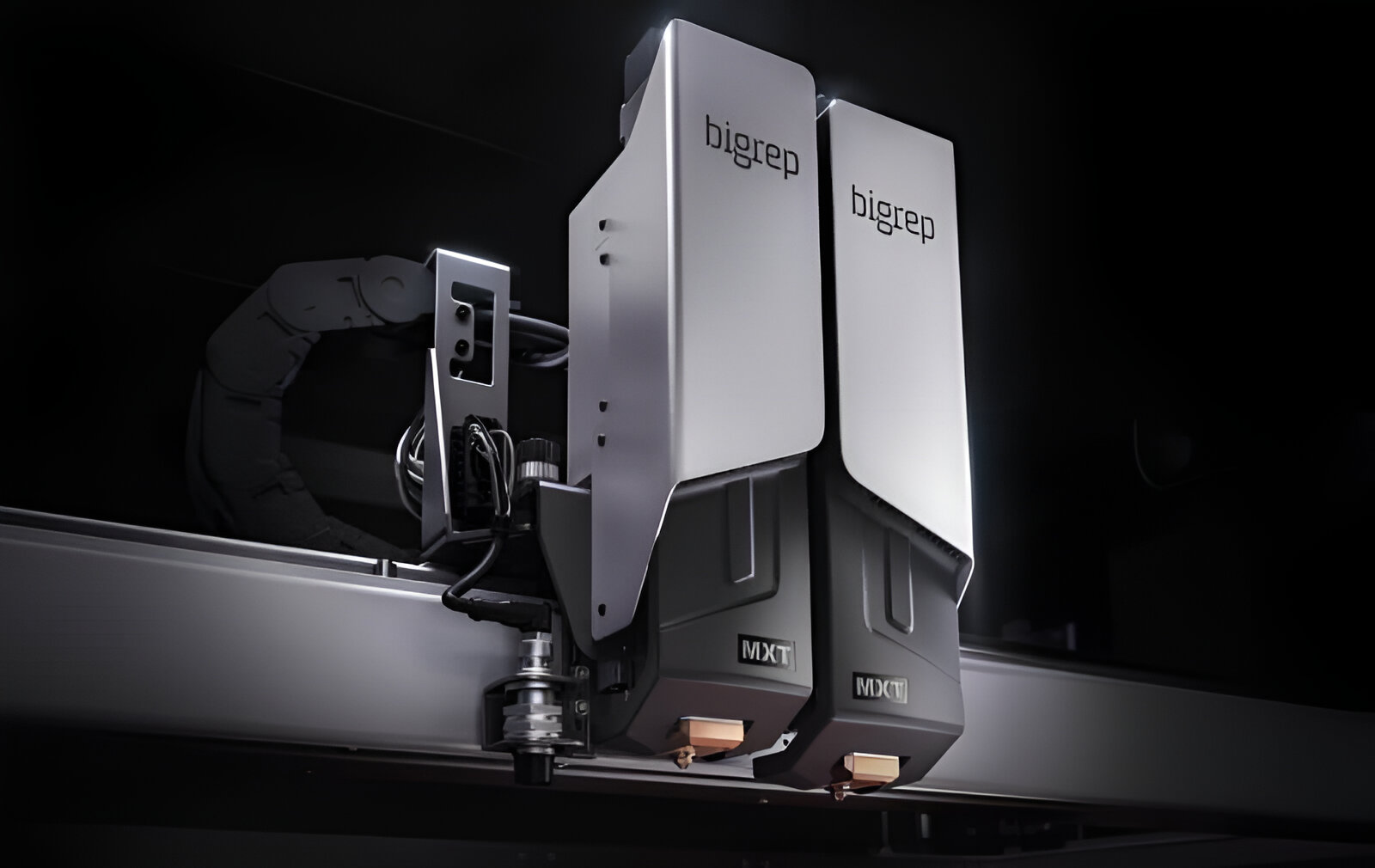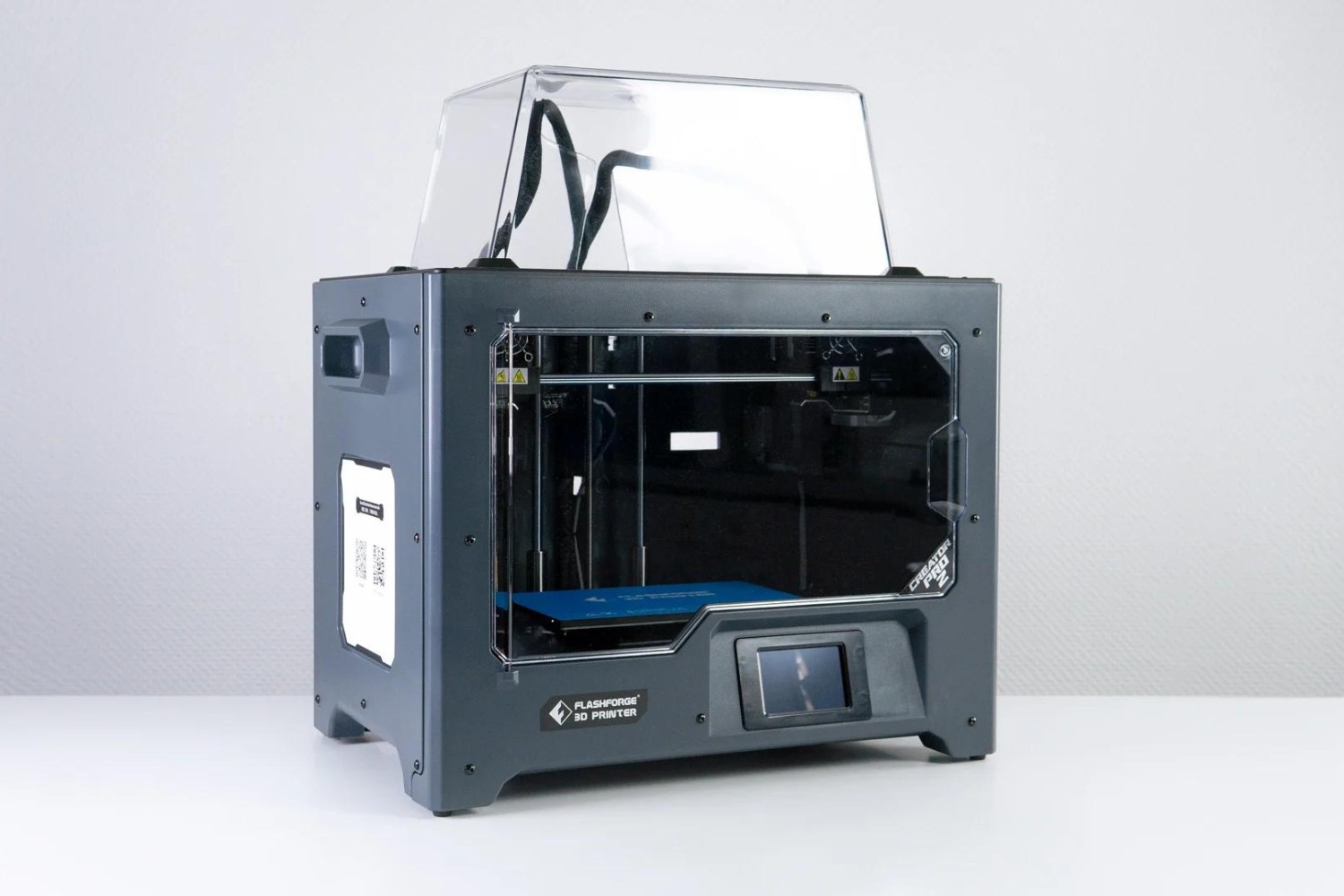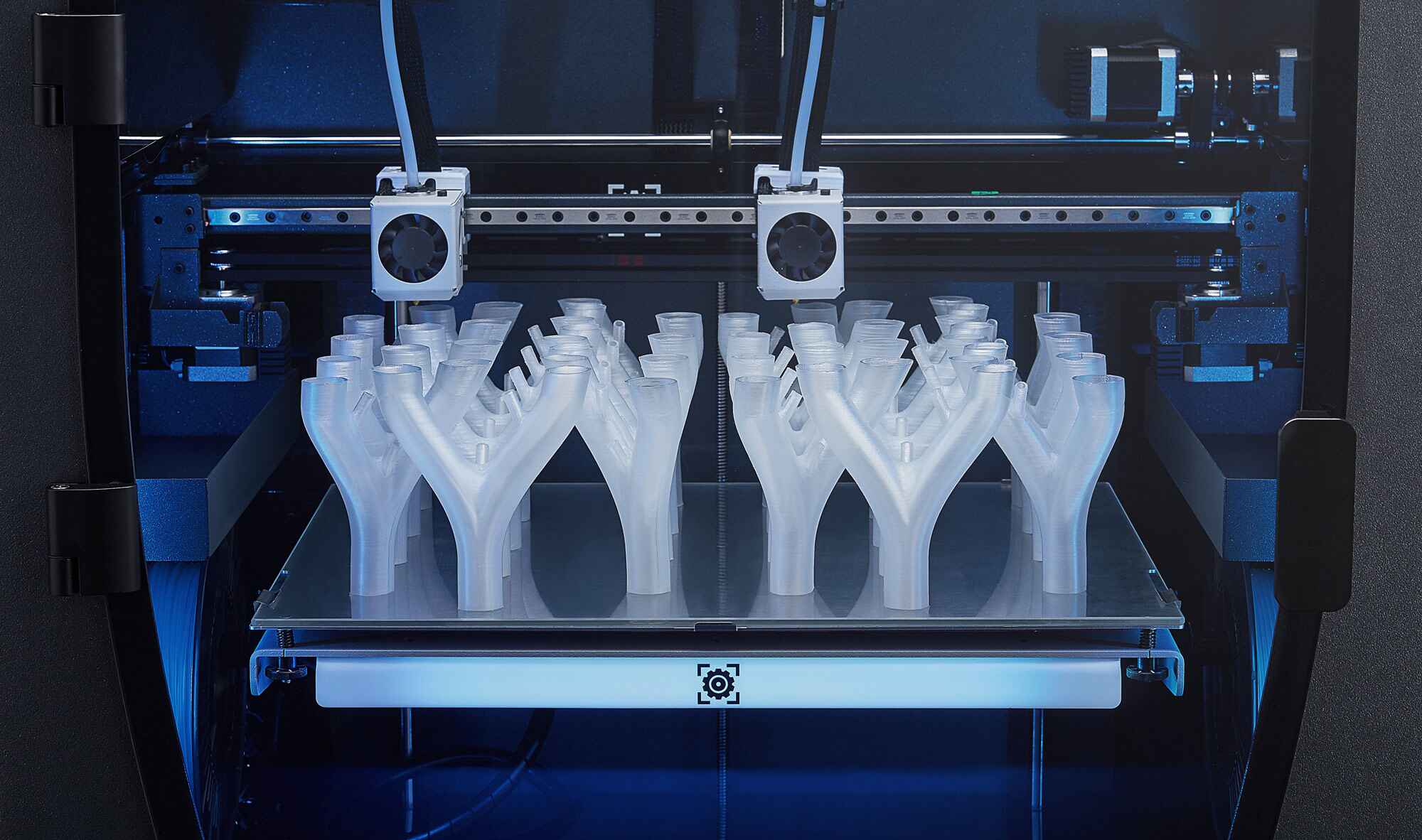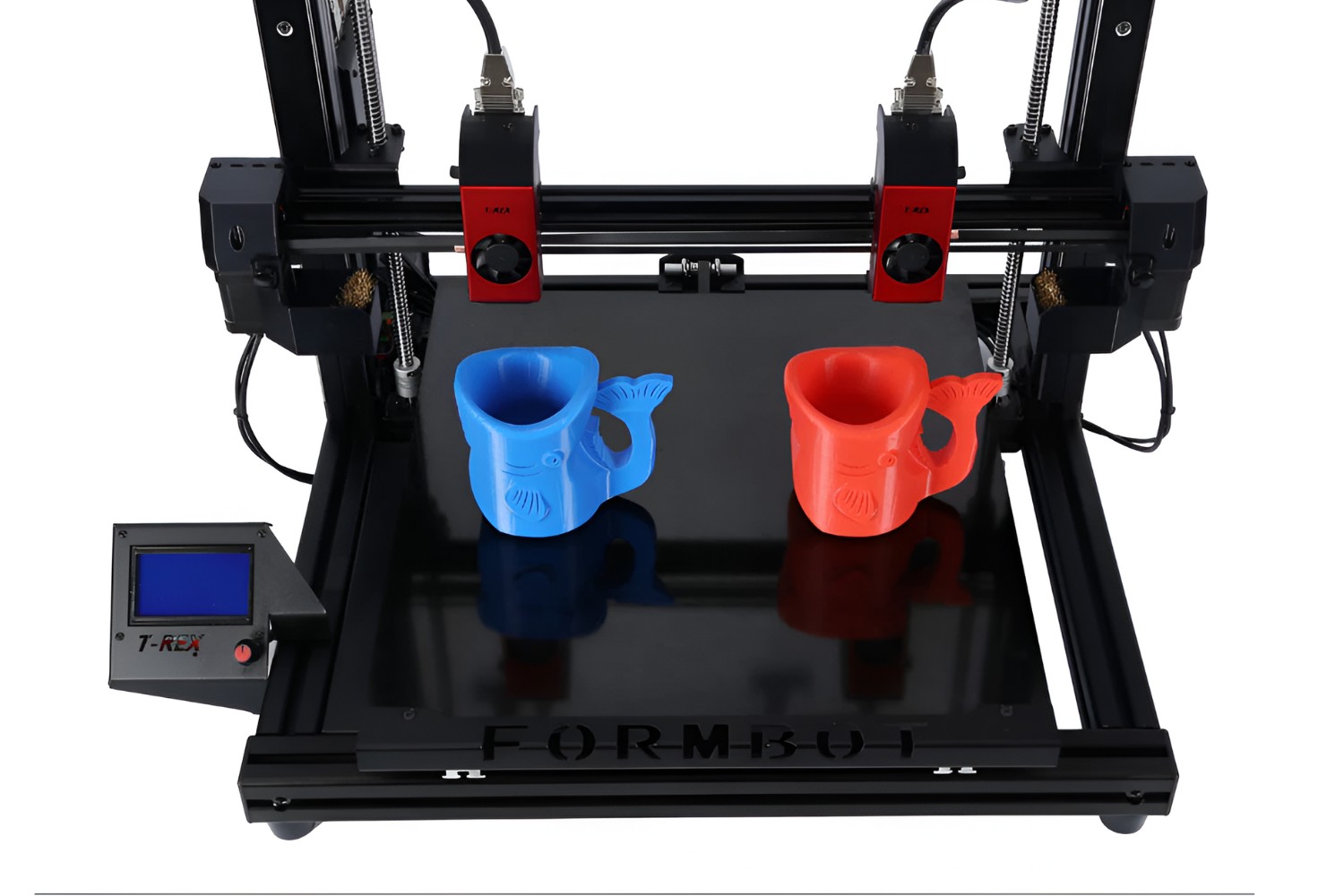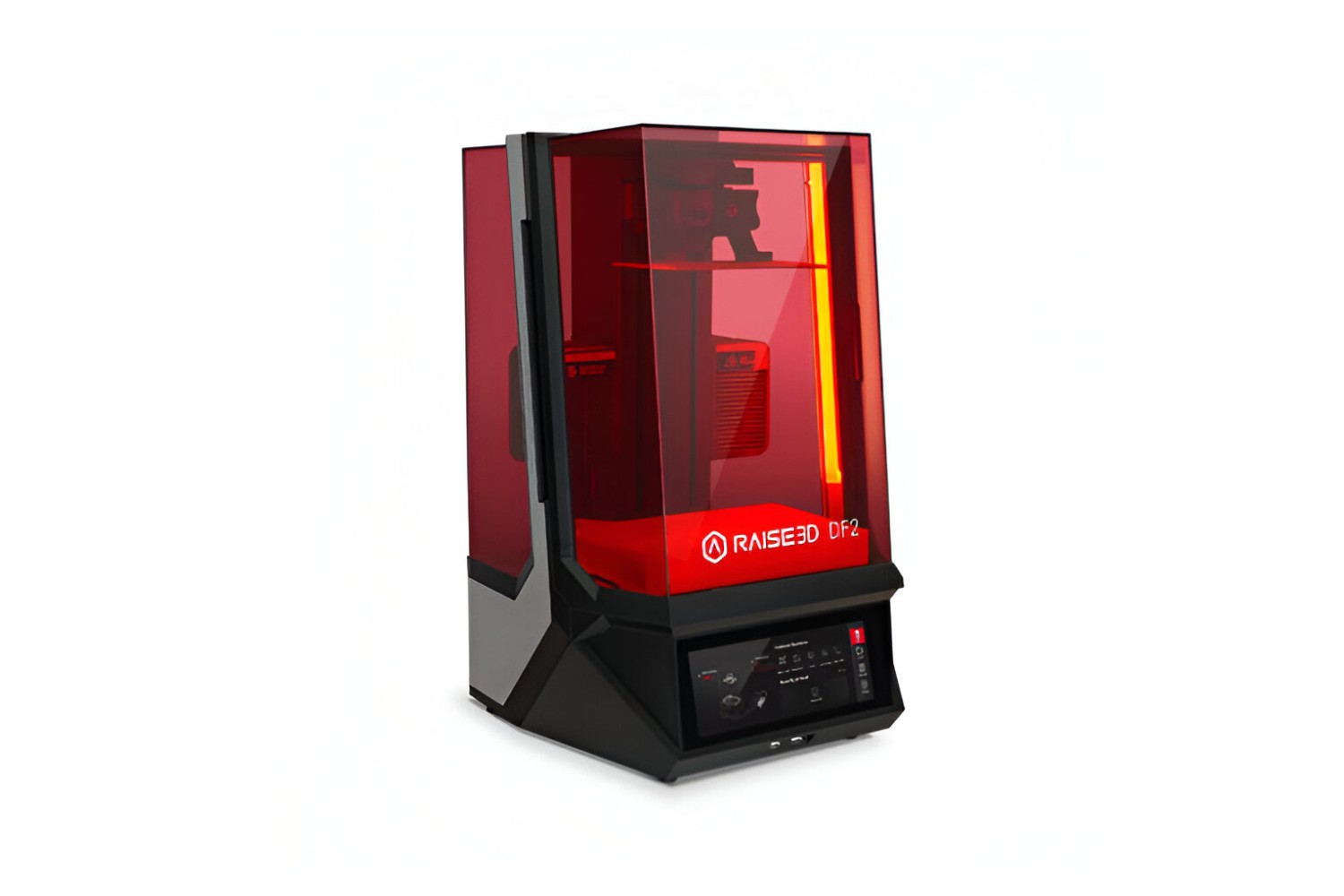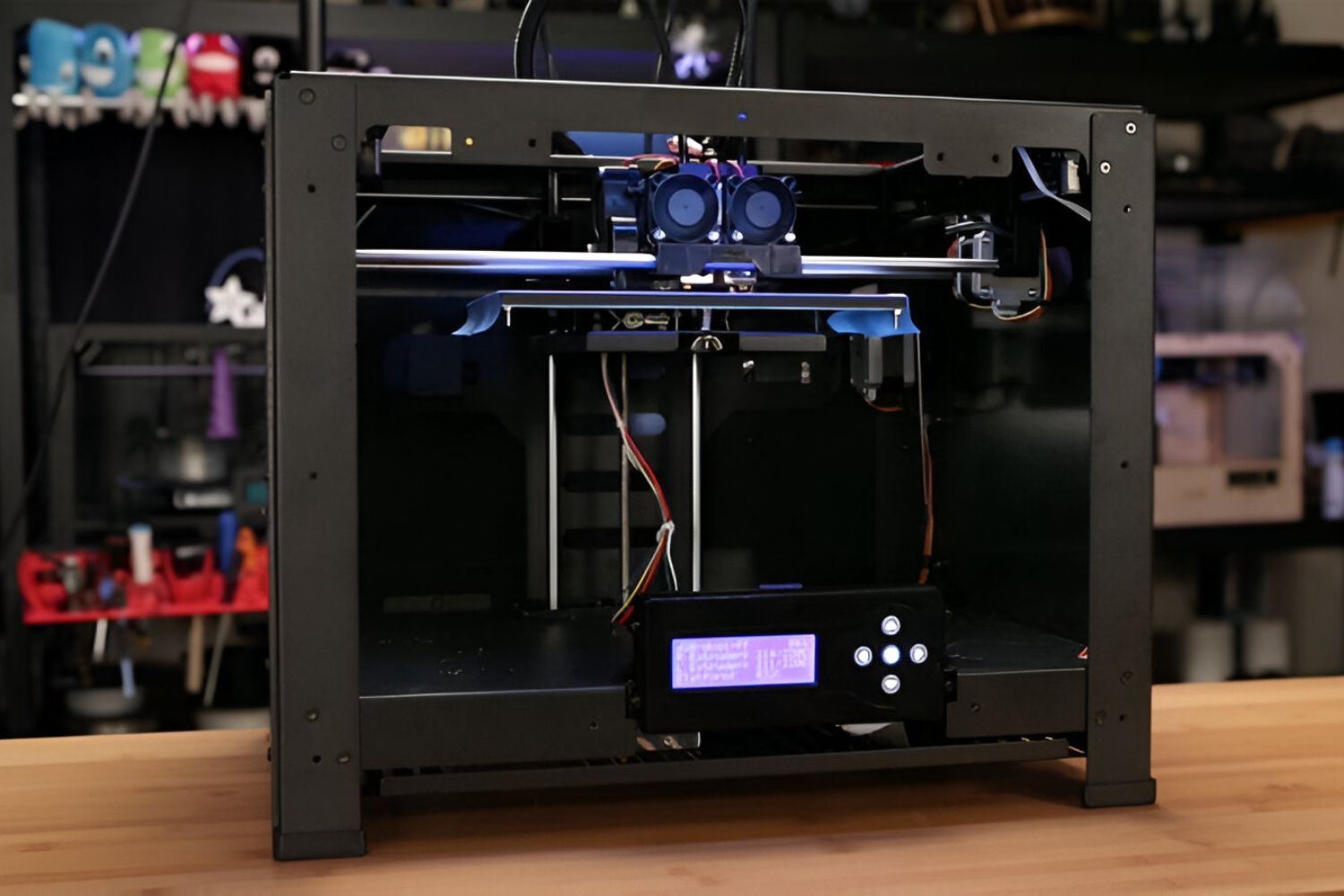Introduction
Welcome to the world of 3D printing, where technology continues to push boundaries and revolutionize various industries. One of the key advancements in 3D printing is the development of dual extruders. In this article, we will explore what a dual extruder is, how it works, its benefits, limitations, and applications.
3D printing has come a long way since its inception, offering innovative solutions for prototyping, manufacturing, and even artistic creations. Traditional 3D printers typically use a single extruder, which limits the printing process to one material or color at a time. However, with the advent of dual extruders, the possibilities for creativity and functionality have significantly expanded.
A dual extruder, as the name suggests, is a feature in a 3D printer that allows for the simultaneous use of two separate extruders. Each extruder is responsible for depositing a different material or color during the printing process, resulting in more complex and intricate designs. This capability opens up a whole new realm of possibilities for 3D printing enthusiasts, professionals, and businesses.
But how exactly does a dual extruder work? What are its benefits and limitations? And what applications can benefit from this advanced feature? Let’s delve deeper into these topics, exploring the inner workings and opportunities that a dual extruder can offer.
What is a Dual Extruder?
A dual extruder is a feature in a 3D printer that allows for the simultaneous use of two separate extruders. In a traditional 3D printer, there is only one extruder, which limits the printing process to a single material or color at a time. However, with a dual extruder, you can print with two different materials or colors, enabling you to create more complex and visually stunning objects.
Each extruder in a dual extruder system has its own filament feed and nozzle. This means that you can load two different filaments into the printer and switch between them during the printing process. The printer controls the movement and deposition of each filament, allowing you to create designs that incorporate multiple materials or colors seamlessly.
This feature opens up a world of possibilities for 3D printing enthusiasts and professionals. With a dual extruder, you can explore the combination of materials with different properties, such as dissolvable support materials or conductive filaments. This enables the creation of more functional and intricate designs that were previously challenging or impossible to achieve.
Furthermore, a dual extruder can be used to create objects with multiple colors. By switching between different colored filaments, you can add vibrant, eye-catching patterns to your prints. This is particularly valuable in industries such as fashion, jewelry, and art, where aesthetics play a crucial role.
It’s important to note that not all 3D printers come equipped with a dual extruder. Some printers may offer it as an optional upgrade, while others may have it built-in from the start. The availability of a dual extruder depends on the specific model and brand of the 3D printer.
In the next section, we will explore how a dual extruder works and the benefits it brings to the world of 3D printing.
How does a Dual Extruder work?
A dual extruder operates by having two separate extruders that work in tandem to deposit different materials or colors onto the print bed. Each extruder has its own filament feed and nozzle, allowing for independent control and deposition of the materials.
The printer’s software and firmware play a crucial role in coordinating the movement and operation of the dual extruder. It ensures that the correct filament is fed into the appropriate extruder at the right time during the printing process. The software also determines when and where to switch between the two extruders, enabling seamless transitions between different materials or colors within a single print job.
When utilizing a dual extruder, the design file used for printing must be prepared accordingly. The software used for slicing the 3D model into printable layers needs to have the capability to assign different parts of the design to each extruder. This enables precise control over which sections of the object are printed with which material.
During the printing process, the printer will execute the instructions provided by the slicer software. As the print head moves, the extruders will deposit the respective materials onto the print bed or previous layers, layer by layer, following the design specifications. The printer may pause momentarily when switching between extruders, allowing for a smooth transition without any unwanted mixing of materials.
It’s worth noting that not all dual extruders operate in the same manner. Some systems have both extruders mounted side by side, while others may have them arranged in a dual bowden setup. The arrangement and configuration will vary depending on the specific printer model and design.
Overall, the use of a dual extruder provides the ability to create more complex and visually striking objects in 3D printing. By leveraging independent control over different materials or colors, the printer opens up a new realm of possibilities for design and functionality.
Benefits of a Dual Extruder
The integration of a dual extruder in a 3D printer brings numerous benefits and advantages to the world of 3D printing. Let’s explore some of the key benefits:
- Increased Material Options: One of the primary advantages of a dual extruder is the ability to print with multiple materials simultaneously. This opens up a world of possibilities for creating objects that require various material properties, such as flexibility, strength, or transparency. Users can combine materials like PLA, ABS, TPU, or even exotic filaments, expanding the applications and capabilities of 3D printing.
- Multi-color Printing: With a dual extruder, you can print objects with multiple colors seamlessly. By switching between different color filaments, you can create vibrant and visually appealing prints. This feature is particularly useful for industries such as fashion, art, and product design, where aesthetics and customization are essential.
- Support Material: Dual extruders allow for the use of support material that can be easily removed after printing. This is particularly helpful when creating complex or intricate designs with overhangs or bridging features. The support material acts as a scaffold to ensure the integrity of the print during the printing process, and once the print is complete, the support material can be dissolved or manually removed.
- Time and Cost Efficiency: By utilizing a dual extruder, you can save time and reduce production costs. This is achieved by combining different materials in a single print run rather than having to print separate components and assemble them later. Additionally, the ability to print support material with the same printer saves time and post-processing efforts.
- Enhanced Design Possibilities: With a dual extruder, designers have more freedom to create intricate and complex designs. By using different materials, textures, or colors, they can add depth and detail to their creations. This is particularly impactful in fields like architecture, jewelry design, and even prosthetics, where aesthetics and functionality go hand in hand.
These are just a few of the many benefits of a dual extruder in a 3D printer. The integration of this feature opens up new avenues for creativity, customization, and functionality in the world of 3D printing.
Limitations of a Dual Extruder
While a dual extruder brings a range of benefits to 3D printing, it is important to consider the limitations associated with this technology. Here are some of the key limitations:
- Increased Complexity: Dual extruders add complexity to the printing process. Managing and calibrating two extruders requires more attention and expertise, which may be challenging for beginners or those who are new to 3D printing. It can be more time-consuming to set up and troubleshoot dual extruder systems.
- Higher Cost: Dual extruder 3D printers tend to be more expensive compared to their single extruder counterparts. The additional hardware and components required for a dual extruder setup contribute to the higher cost. For hobbyists or casual users, the added expense may not be justifiable based on their specific needs.
- Increased Maintenance: Dual extruders require regular maintenance to ensure optimal performance. This includes cleaning the nozzles, unclogging filament paths, and fine-tuning the alignment between the extruders. The higher number of moving parts and components increases the likelihood of issues arising and necessitates more frequent upkeep.
- Limitations in Print Quality: Dual extruder systems can sometimes compromise the overall print quality. Ghosting, oozing, or color bleeding between different materials can occur if the extruders are not properly calibrated. Achieving precise alignment and synchronization between the two extruders can be challenging, resulting in imperfect prints.
- Reduced Print Speed: When utilizing two extruders simultaneously, the print speed may be reduced compared to a single extruder setup. This is due to the additional time required for switching between filaments or materials. While the impact on print speed may vary depending on the printer and the specific model, it is a factor to consider, especially for time-sensitive projects.
Despite these limitations, the benefits and capabilities of a dual extruder system often outweigh the challenges. For experienced users and professionals, the ability to overcome these limitations and leverage the advantages of a dual extruder opens up exciting possibilities for creativity, functionality, and customization in 3D printing.
Applications of a Dual Extruder
The integration of a dual extruder in a 3D printer expands the range of applications and possibilities in various industries. Here are some key areas where a dual extruder can be particularly beneficial:
- Functional Prototyping: Dual extruders are immensely useful for functional prototyping. By combining different materials, such as rigid and flexible filaments, engineers and product designers can create prototypes that closely resemble the final product in terms of form, fit, and function. This enables quick iteration and validation of designs before moving to mass production.
- Art and Jewelry: Dual extruders unleash a new dimension of creativity in art and jewelry design. Artists can combine different colors and textures to produce visually striking sculptures, intricate jewelry pieces, and artistic installations. The ability to seamlessly switch between colors within a single print job adds depth and complexity to these artistic creations.
- Education and Research: Dual extruders in 3D printers have immense value in educational institutions and research settings. Students and researchers can explore the possibilities of multi-material printing, studying the characteristics and applications of different materials. This allows for hands-on learning experiences and facilitates research in fields like materials science, engineering, and healthcare.
- Architecture and Model Making: Architectural models often require the combination of different materials and colors to accurately represent a building or structure. With a dual extruder, architectural firms can create detailed models with realistic texture and color differentiation between various elements, such as walls, windows, and landscaping features.
- Dental and Medical Applications: Dual extruders have found applications in the field of dentistry and medical device manufacturing. Dentists can create prosthetics and aligners that incorporate different materials to achieve the desired strength, flexibility, and aesthetics. Similarly, medical device manufacturers can produce custom implants and surgical guides with tailored materials for improved patient outcomes.
These are just a few examples of the wide range of applications where a dual extruder can be advantageous. From functional prototypes to intricate artistic creations, the versatility and capabilities of a dual extruder add value across various industries, pushing the boundaries of what is possible with 3D printing.
Conclusion
The integration of a dual extruder in 3D printers has revolutionized the world of 3D printing, offering new opportunities and capabilities. Dual extruders allow for the simultaneous use of two separate extruders, enabling the printing of objects with multiple materials or colors. This enhances the creativity, functionality, and customization potential of 3D printing.
With a dual extruder, users can experiment with a wide range of materials, including rigid and flexible filaments, dissolvable support materials, or conductive filaments. This opens up possibilities for functional prototyping, art, jewelry design, and even medical applications. The ability to seamlessly transition between different colors within a single print job adds depth and detail to artistic creations.
While there are limitations to consider, such as increased complexity, higher costs, and the need for maintenance, the benefits offered by a dual extruder are undeniable. The variety of applications is vast, spanning fields such as manufacturing, education, architecture, and healthcare.
As technology continues to advance, we can expect further enhancements in dual extruder systems, addressing some of the current limitations and expanding the capabilities even more. Exciting innovations lie ahead, enabling users to push the boundaries of 3D printing and unlock new realms of creativity.







